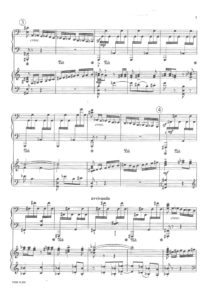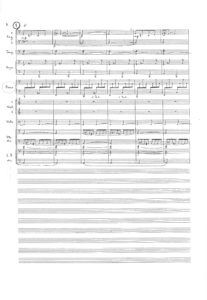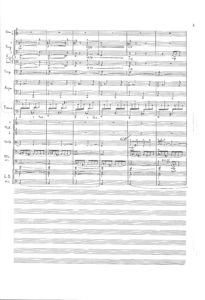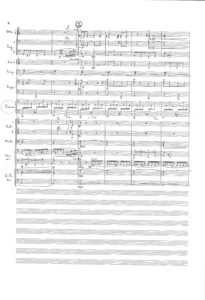During his first stay in Sweden, shortly after his recovery Maciejewski composed a single-movement Allegro concertante for piano and symphony orchestra. This was possible thanks to a scholarship he received from the Polish National Culture Fund. A piece for a large instrumental line-up was unusual for the composer, but thanks to this composition we can learn what substantial potential Maciejewski had when it came to using the orchestral texture.
The reference to the tradition of the sonata allegro suggests that the work can be classified as neoclassical, while the leading role of the piano and the use of the concertante technique suggest it should be treated as a valuable continuation of the tradition of the Romantic piano concerto (further evidence of which is the use of elements of the sonata form).
Various kinds of instrumental techniques become here carriers of the musical dramaturgy, thanks to which the work is perceived as a virtuosic showpiece (although not devoid of moments of calm and emotional breathing space). The dense, often changing texture, figurativeness of the melodic line, fast tempo and even staccato articulation provide an opportunity for the pianist to display his or her talent, but also require extraordinary technical skill and considerable stamina. Maciejewski must have had all these qualities, as he himself performed the work several times (beginning with the premiere in Göteborg in 1945).
The joyful, energetic mood of Allegro concertante brings to mind the best film music and its vitality is contrasted with the lyricism of the Lullaby added in the 1970 as the first movement. This diptych, as it were, for piano and orchestra is certainly a proposal very attractive to performers, a proposal which should be included in concert programme much more often.
- R. Maciejewski, Allegro concertante for piano and orchestra, score, title page (PWM Edition)
- R. Maciejewski, Allegro concertante for piano and orchestra, score excerpt (PWM Edition)
- R. Maciejewski, Allegro concertante for piano and orchestra, score excerpt (PWM Edition)
- R. Maciejewski, Allegro concertante for piano and orchestra, score excerpt (PWM Edition)
- R. Maciejewski, Allegro concertante for piano and orchestra, manuscript, p. 1 (PWM Edition)
- R. Maciejewski, Allegro concertante for piano and orchestra, manuscript, p. 2 (PWM Edition)
- R. Maciejewski, Allegro concertante for piano and orchestra, manuscript, p. 3 (PWM Edition)
- R. Maciejewski, Allegro concertante for piano and orchestra, manuscript, p. 4 (PWM Edition)







